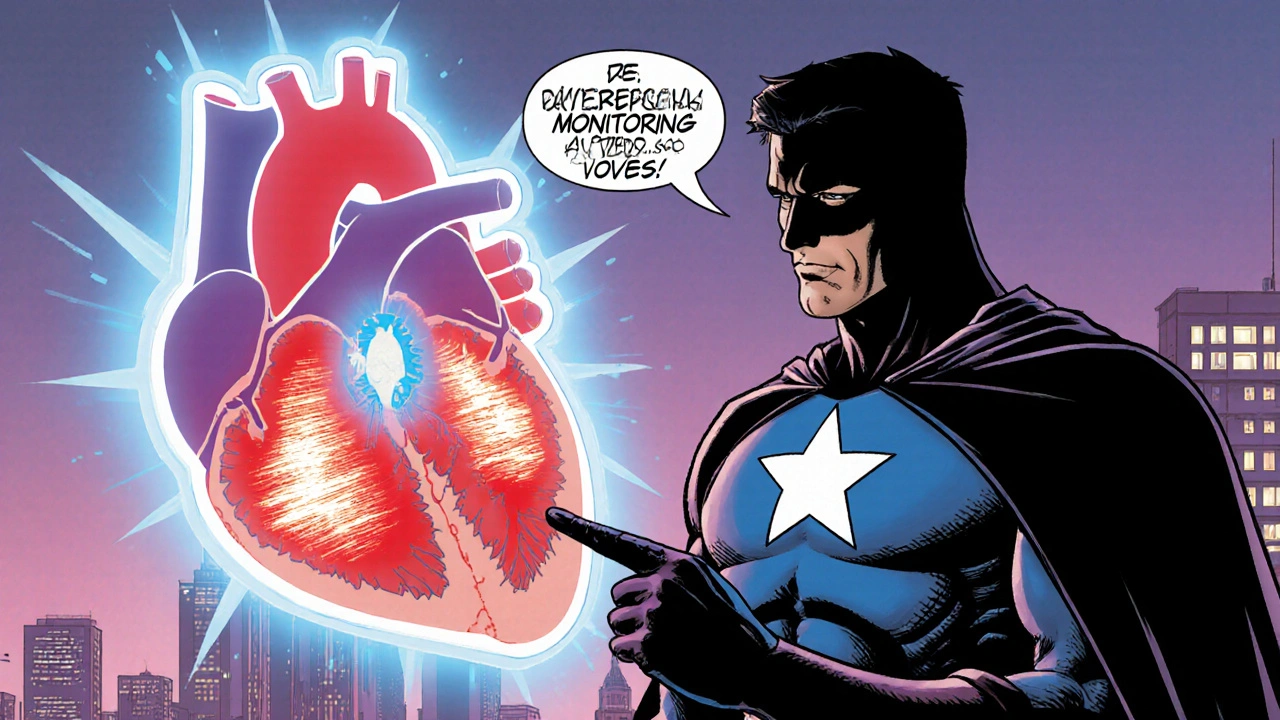Cardiac Imaging: Techniques, Benefits, and Clinical Insights
When working with cardiac imaging, the use of visual technology to evaluate heart structure and function. Also known as heart imaging, it helps doctors see what’s happening inside the chest without surgery. cardiac imaging covers a wide range of tools, each with its own strengths and limits.
One of the most common tools is echocardiography, ultrasound that creates real‑time moving pictures of the heart. It’s quick, portable, and radiation‑free, making it ideal for bedside checks and routine follow‑ups. Another cornerstone is magnetic resonance imaging, a high‑resolution scan that uses magnetic fields to detail cardiac tissue, often called cardiac MRI. Both echo and MRI fall under the umbrella of cardiac imaging and together provide a solid picture of valve motion, chamber size, and blood flow.
Beyond Echo and MRI: Advanced Modalities and Key Considerations
When clinicians need more detail about coronary arteries, they turn to computed tomography, CT scans that reconstruct 3‑D images of the heart and vessels. CT offers fast acquisition and excellent spatial resolution, especially when paired with contrast agents that highlight blood vessels. Nuclear cardiology, using PET or SPECT, adds functional data by tracing how the heart muscle uses glucose or oxygen, which helps spot areas with reduced blood flow. Each of these modalities requires specific preparation: CT and nuclear scans often need iodine‑based or radioactive contrast, while MRI may need gadolinium if extra tissue detail is wanted.
Because contrast agents can affect kidney function, patients on certain medications—like non‑steroidal anti‑inflammatory drugs (NSAIDs) or high‑dose diuretics—must be screened for renal health before the scan. Drug interactions can also blur the image; for example, beta‑blockers are sometimes given before a stress test to control heart rate, ensuring clear images. Understanding how medications influence imaging results is a key part of safe practice, and many clinicians rely on drug interaction checkers to avoid surprises during the exam.
Image quality also depends on technology and expertise. Radiology technologists operate the scanners, but cardiologists interpret the results, often using advanced software that enhances borders, measures flow, and even applies AI to flag abnormalities. When you combine high‑quality equipment with skilled readers, the diagnostic yield of cardiac imaging rises dramatically, turning blurry pictures into actionable treatment plans.
All these pieces—different modalities, contrast safety, medication effects, and expert interpretation—fit together to make cardiac imaging a powerful diagnostic ally. Below you’ll find a curated collection of articles that dive deeper into specific drugs, side‑effects, and clinical scenarios that intersect with heart imaging. Whether you’re looking for interaction alerts, dosing tips, or condition‑specific guidance, the posts ahead will give you practical insights you can apply right away.
